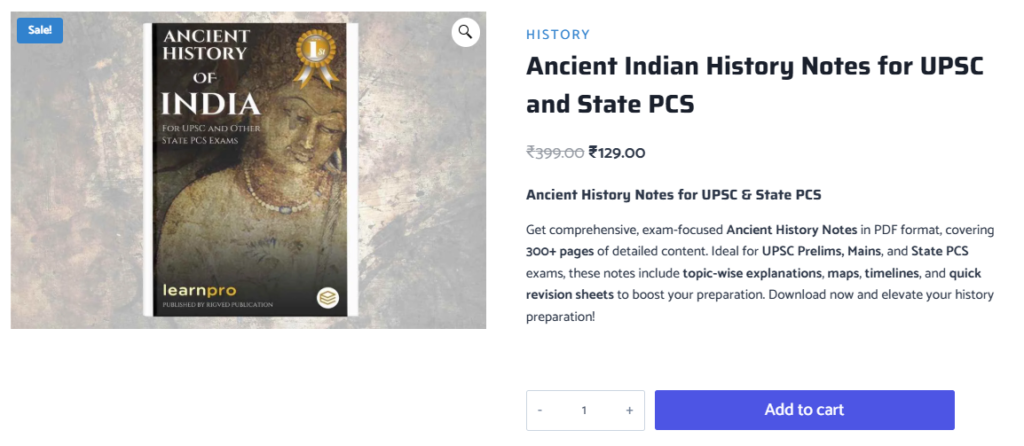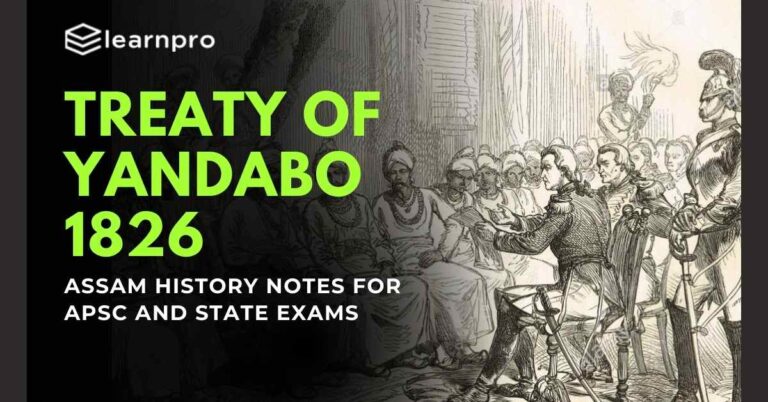October 24, 2025 4:26 pm
Introduction to the Paik System
The Paik System was a distinctive form of labor and military organization that underpinned the administrative, economic, and defense mechanisms of the Ahom kingdom in Assam for nearly six centuries. Developed as a decentralized yet robust system of human resource management, the Paik System played a pivotal role in the state-building process of medieval Assam. It not only supplied manpower for royal projects and armies but also laid the foundation for a self-sufficient agrarian economy.
- APSC Notification 2025 OUT | APSC CCE 2025 Exam Date, Vacancy, Exam Pattern, Syllabus & Eligibility
- APSC Exam 2025: A Complete Guide for Aspirants
- APSC CCE Final Result 2023: Assam Public Service Commission Declares Results for Combined Competitive Examination
- APSC Result 2025: Date, Download PDF, and Merit List
- APSC Application Form 2025: Expected Release Date , How to Apply
- APSC Cut Off 2025: Expected Cut off, Everything You Need to Know
- APSC Exam 2025: Key Dates, Eligibility, Admit Card, Syllabus, and Exam Pattern
- APSC Syllabus 2025: Subject-Wise Topics for APSC Prelims, Mains, and Interview
Implemented during the reign of the first Ahom ruler, Sukapha, and further refined by successive kings, the Paik System was essentially a compulsory service framework. Every able-bodied male, known as a paik, was registered in official rolls and obligated to contribute labor or military service to the state. These paiks were grouped into organized units called khels, which functioned like guilds or service divisions, managed by designated officers.
What made the Paik System particularly unique was its rotational duty model — typically, one paik would serve while the other two remained on standby or tended to personal and agricultural duties. This not only ensured continuity in public works and defense but also prevented complete economic disruption for the individual and his family.
Over time, the Paik System became deeply embedded in the socio-economic fabric of Assamese society. However, like most rigid systems, it began to show signs of strain, particularly in later centuries when increasing demands, corruption, and inefficiencies crept in. It eventually became a source of widespread discontent, contributing to landmark uprisings like the Moamoria Rebellion.
Understanding the Paik System in Assam is crucial to appreciate how pre-modern states in India organized labor, defense, and governance with limited mechanization but remarkable efficiency.

Historical Origins of the Paik System
The roots of the Paik System in Assam trace back to the establishment of the Ahom kingdom in the early 13th century by Sukapha, the founder of the Ahom dynasty. When the Ahoms entered the Brahmaputra valley around 1228 CE, they encountered indigenous tribes and a landscape that lacked centralized governance but was agriculturally rich. To consolidate control, Sukapha laid the foundation for a structured administrative and labor model, which would later evolve into the Paik System.

Drawing inspiration from their Tai-Ahom heritage, which emphasized community-based contributions and shared responsibilities, the Ahoms instituted the concept of universal civic duty. Every male subject was enrolled as a paik and grouped into units responsible for serving the state in rotation. This ensured that the rulers had a perpetual pool of manpower to draw upon for warfare, infrastructure, agriculture, and governance.
Initially, the Paik System was a practical and egalitarian solution. Unlike the feudal systems in other parts of India that heavily relied on land grants and zamindars, the Ahoms preferred to maintain direct control over people instead of land. This distinction allowed them to build a non-feudal, yet centralized state that could mobilize thousands without permanent standing armies or large tax bureaucracies.
Over time, the system became more formalized. Each paik was allotted a piece of cultivable land for sustenance but was bound to render services as required by the state. The rotation model meant that while one paik served, the others could support his family or community, balancing economic productivity with state obligations.
One of the earliest examples of the effectiveness of the Paik System in Assam was seen during military conflicts with neighboring kingdoms like the Koch and the Mughals. The rapid mobilization of thousands of paiks played a crucial role in defending the Ahom frontier.
As the Ahom state expanded and matured, so too did the Paik System. It began to extend into new territories, absorbing various ethnic groups and integrating them into the administrative fold through this system.
Structure and Administration of the Paik System
The Paik System in Assam was not merely a loose collection of laborers and soldiers—it was a highly structured and efficient institutional mechanism that formed the backbone of the Ahom state’s administrative and operational framework. Its strength lay in its well-defined hierarchy, division of labor, and balanced rotational model that ensured both continuity and sustainability.

At the core of the system was the individual paik, an able-bodied male enlisted in the state’s service. Each paik was typically assigned a piece of cultivable land known as nagan for personal use and sustenance. However, in exchange, he was obligated to render regular service to the state, either through manual labor, agricultural contribution, or military duty.
One of the defining features of the system was the three-man rotational model, often referred to as the got system. In this model, three paiks formed a unit. At any given time, one paik would be in active service, while the other two continued their agricultural work and provided support. This allowed the state to always have a reserve of labor and manpower without disrupting food production or livelihoods.
Paiks were grouped into large functional divisions called khels. These khels operated as service-specific guilds or administrative units. For example, there were khels for blacksmiths, carpenters, boatmen, scribes, soldiers, and cultivators. Each khel had its own supervisory officers and was assigned duties according to its specialization.
The system also had a robust hierarchical structure of officers overseeing the paiks and their khels. Key positions included:
- Phukans: Mid-level officers responsible for commanding paiks across multiple khels. They held administrative and judicial powers.
- Rajkhowas: Territorial administrators with both civil and military duties, often managing clusters of khels within a region.
- Baruas and Gohains: Higher-ranking officials who reported directly to the king and coordinated large-scale labor or military operations.
This decentralized administrative model allowed the Ahom kings to maintain a vast and responsive state without the need for a large standing bureaucracy. Orders could be passed quickly down the chain, and in return, taxes and services could be collected efficiently.
The structure also ensured a deep integration of society into state functions. Every paik was both a citizen and a contributor to the state’s infrastructure—bridges, roads, embankments, palaces, and military campaigns were all executed by paik labor.
However, while efficient in its early centuries, the structure began to reveal weaknesses in the late 18th century. Corruption, misuse of labor quotas, and lack of accountability in khel supervision led to inefficiencies and public dissatisfaction, eventually contributing to social unrest and rebellion.
Role of the Paik System in Society and Economy
The Paik System in Assam was not only a tool of governance and military mobilization—it also played a pivotal role in shaping the socio-economic landscape of the Ahom kingdom. Through its intricate blend of labor, land allocation, and local responsibilities, the system became deeply embedded in both the economic functioning and societal structure of pre-colonial Assam.
Agriculture formed the economic base of the Ahom state, and the Paik System ensured that cultivable land was systematically distributed and efficiently managed. Each paik was allotted a piece of land, known as nagan, for subsistence farming. This land was tax-free but came with the obligation to render service to the state. As a result, paiks were incentivized to cultivate the land productively while remaining accountable to the state for their periodic duties.
This arrangement fostered a self-sufficient agrarian society where the majority of the population contributed to both food production and state development. The rotational structure meant that while one paik served, the other two continued agricultural operations, thus avoiding disruption in food supply and preserving rural economic stability.
The Paik System also made significant contributions to public infrastructure. From constructing roads, embankments, irrigation canals, and storage facilities to building royal structures like temples and palaces, paiks were the primary workforce. This decentralized labor force allowed the Ahom state to undertake ambitious infrastructure projects without the need for centralized taxation or contracted services.
Beyond agriculture and construction, certain khels were organized around economic activities such as salt-making, boat-building, ironwork, and weaving. These specialized khels contributed to the internal economy and trade, ensuring a steady supply of goods necessary for administration and everyday life. In effect, the Paik System functioned as an early form of state-regulated labor distribution supporting diverse economic sectors.
However, the very efficiency of the system also led to its exploitation over time. With growing administrative needs and expanding territory, the burden on paiks increased significantly. Extended service durations, arbitrary deployments, and lack of compensation became widespread issues. The system, once a means of equitable contribution, began to transform into a mechanism of forced labor.
This erosion of balance between duty and livelihood gradually bred social discontent, particularly among marginalized groups who bore the brunt of service obligations without sufficient protection or recognition. The weakening of the original principles of rotation and fairness contributed directly to uprisings like the Moamoria Rebellion, where the Paik System itself became a target of resistance.
Despite its eventual decline, the Paik System in Assam remains an early example of a state-directed economic framework, where civic responsibility and economic participation were deeply intertwined.
Military Utility of the Paik System
One of the most remarkable features of the Paik System in Assam was its ability to sustain the military strength of the Ahom kingdom for centuries without the need for a conventional standing army. The system’s inherent flexibility and the embedded duty of military service in every paik made it an effective tool for both internal security and external defense.
Every paik, while primarily a laborer or agriculturist, was also militia-ready. When needed, paiks were mobilized quickly to serve as soldiers, archers, boatmen, or logistical support personnel in military campaigns. This dual-role capability created a civil-military integration unique in pre-modern South Asia.
The Ahom kingdom, particularly under rulers like Suhungmung and Rudra Singha, demonstrated exceptional military organization powered by this system. The most well-documented example of the Paik System’s military effectiveness was during the Battle of Saraighat (1671), when Ahom forces led by Lachit Borphukan decisively defeated the Mughal army. The success of this defense was largely due to the timely and strategic mobilization of paiks across multiple khels.
In terms of deployment, military paiks were divided into specialized khels based on their skills:
- Archery units
- Cavalry units (limited but present)
- Naval divisions, especially critical for battles along the Brahmaputra
- Infantry and supply line management
Each military unit operated under specific commanders such as Phukans and Rajkhowas, who were selected based on merit and lineage. Orders were relayed swiftly through this organized structure, enabling large-scale mobilizations within days.
The rotational model remained effective in military terms as well. While one paik served in active combat, the others maintained readiness and supported supply chains back home. This system allowed the Ahom state to replenish its forces continuously during extended conflicts without exhausting resources.
Despite its advantages, the military arm of the Paik System began to suffer in the 18th century. Frequent deployments, increased taxation, and corruption in officer ranks led to a drop in morale and discipline. Many paiks resisted conscription or fled service, contributing to growing instability. These cracks in the military framework became especially visible during the Moamoria Rebellion and later during the Burmese invasions, when the Ahom defense system failed to respond adequately.
Nonetheless, for over four centuries, the Paik System in Assam functioned as a unique military institution, enabling the state to defend its sovereignty and engage in warfare without the economic burden of a full-time army.
Collapse and Criticisms of the Paik System
While the Paik System in Assam was initially praised for its structural efficiency and egalitarian design, over time, it began to reveal serious flaws. By the late 17th and especially the 18th century, the system that once enabled the Ahom kingdom to thrive started to disintegrate under the weight of its own complexity, administrative corruption, and overexploitation.
One of the primary criticisms of the system was its increasing rigidity and burden on common people. The rotational duty model, which was once flexible and community-focused, began to break down. In many areas, paiks were forced to serve beyond their designated periods, while others were called up repeatedly without adequate rest or compensation. The growing demand for state labor during periods of expansion and warfare made it increasingly difficult for paiks to sustain both their service duties and their livelihoods.
As corruption seeped into the system, many local officials—particularly in the khel and phukan ranks—began to abuse their authority. Some collected illegal taxes, altered paik registers for personal benefit, or forced paiks into extended service by manipulating duty rolls. This created widespread resentment among the working classes, especially in Upper Assam, where the burden was most intense.
The most visible and violent outcome of this discontent was the Moamoria Rebellion. Originating in the 1760s, the rebellion was largely fueled by members of the Mayamara Satra who were also part of the paik workforce. They had grown increasingly frustrated with both religious persecution and the exploitative demands of the Paik System. The rebellion lasted for several decades, destabilized the Ahom state, and exposed the systemic decay that had taken root in the kingdom’s core institutions.
In the later stages of the Ahom rule, the state attempted reforms, such as reducing paik obligations and simplifying khels, but these changes came too late. The system had already lost its legitimacy among the people. During the Burmese invasions in the early 19th century, many paiks refused to serve, further weakening the kingdom’s ability to defend itself.
With the advent of British rule following the Treaty of Yandabo in 1826, the Paik System in Assam was formally dismantled. The British, who favored centralized revenue collection and professional armies, viewed the paik structure as inefficient and outdated. What remained was replaced by salaried bureaucracy and modern land tax systems.
Despite its collapse, the Paik System left behind a legacy of both innovation and oppression—a reminder that even the most well-intentioned administrative systems must evolve to remain just and sustainable.
For related insights on the causes and effects of the Moamoria Rebellion, refer to Moamoria Rebellion in Assam.
Legacy of the Paik System in Assam’s Political Thought
The Paik System in Assam, though officially abolished in the 19th century, left a lasting imprint on the political consciousness of the region. Its influence extended far beyond its immediate administrative function, shaping ideas of governance, civic duty, resource mobilization, and community identity well into the colonial and post-colonial periods.
At its peak, the Paik System exemplified a non-feudal, centralized governance model that emphasized duty over taxation, labor over land, and direct accountability between subject and state. This model, while eventually strained, presented a distinct contrast to the zamindari or jagirdari systems dominant in other parts of India. For many scholars and regional thinkers, it represented an alternative Indian path to statecraft—one rooted in participatory responsibility rather than hereditary privilege.
During the early colonial period, British administrators observed remnants of the Paik System and found it both fascinating and incompatible with their own models of administration. While they replaced it with salaried posts and land revenue collection, they did adopt certain insights from its structure. The concept of registering local populations, using village-level officers for information relay, and categorizing labor roles for specific tasks bore similarities to the khel-based management under the Paik model.
In regional political discourse, especially during the 20th century, the Paik System came to be seen by some Assamese intellectuals as a symbol of indigenous administrative genius—an example of how the region once managed vast resources and territories without colonial oversight. Writers and historians began to reassess the Paik System not just as a labor mechanism but as a framework of decentralized governance uniquely adapted to the geographic and cultural realities of Assam.
This reassessment also fed into broader debates about ethnic identity and autonomy. Various ethnic communities in Assam who were historically part of the khel divisions began to reclaim their place in history by highlighting their roles in building and defending the pre-colonial state. In this way, the Paik System contributed to the construction of regional historical memory and identity, especially as Assamese society navigated questions of self-rule, language rights, and federalism post-Independence.
Although modern governance in Assam has moved far beyond such medieval institutions, the legacy of the Paik System endures as a reminder of collective labor, decentralized organization, and the challenges of balancing civic duty with justice.
Historiography: Interpretations by Scholars
The Paik System in Assam, despite being one of the most sophisticated indigenous administrative structures in pre-modern India, has often been marginalized in national historiography. Its interpretations have varied significantly depending on the perspectives and objectives of those writing about it—ranging from colonial administrators to modern regional historians.
In early colonial writings, the Paik System was viewed with a mix of curiosity and dismissal. British chroniclers such as Edward Gait, in his seminal work A History of Assam, acknowledged the system’s efficiency but largely regarded it as a form of primitive, forced labor. These accounts, shaped by the colonial agenda of civilizational superiority, saw the system as outdated and oppressive, in contrast to the supposedly modern and rational structures the British sought to impose.
This interpretation persisted for much of the colonial period, influencing early academic studies and administrative reports. The emphasis was on the system’s exploitative aspects, especially during its later stages when it had indeed become rigid, corrupt, and burdensome.
In contrast, post-independence Assamese scholars have offered a more balanced and regionally grounded analysis. Historians such as S.K. Barpujari and Surya Kumar Bhuyan examined the Paik System as an early attempt at non-feudal state-building, emphasizing its role in resource mobilization, community governance, and social integration. These scholars also highlighted the participatory aspects of the system during its early phases—where every citizen contributed to the state without being wholly subjugated by it.
Modern interpretations tend to adopt a dual lens. On one hand, the Paik System is recognized as a pioneering administrative innovation that sustained the Ahom kingdom for centuries. On the other, it is acknowledged that over-centralization, abuse of authority, and lack of reform turned it into a mechanism of oppression—eventually contributing to rebellion and collapse.
Thus, historiography reveals that the Paik System in Assam is best understood not as entirely oppressive or wholly efficient, but as a dynamic institution whose strengths and weaknesses evolved with time.






